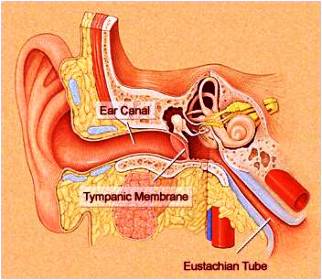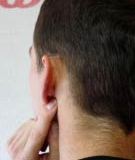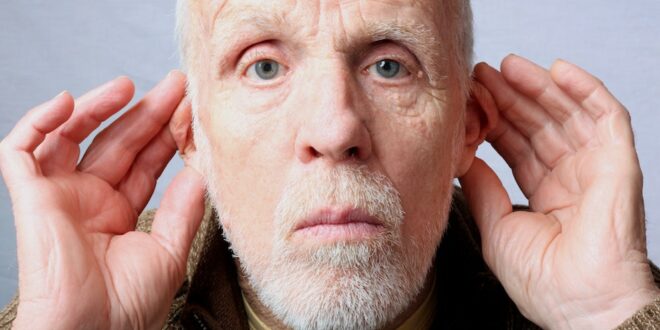You may have heard the X and Y generations are facing an epidemic of ear damage from loud music, in particular from listening to MP3 players such as iPods all day with those cute little earbuds.
As a Baby Boomer I did exactly the same sort of things, with very loud music blasting away at concerts, sitting in front of the latest gigantic stereo speakers. Been there, done that, and it definitely caused me some serious damage. I know this because around a decade ago it started to catch up with me. As I hit my mid 40’s I found out I had Tinnitus, symptoms started with an itchy sort of hissing sound that would not go away, even sleep became a chore when it turned into a continuous buzzing/ringing.
Today, the majority of people with Tinnitus are over 40 years of age, equally male and female, but this is changing as symptoms are already starting to show up in much younger people. Current medical opinion is about 50% of cases of Tinnitus cannot be identified and of course it is vital to establish ‘the cause’ in order to treat correctly. Being ‘in the health solutions business’ when it happened to me, I read everything I could find, studied treatments, then worked on a couple of ideas of my own. For me what worked was locating and releasing tension in the Eustachian tubes and the surrounding muscles.
Over the past decade, we have regularly and successfully treated Tinnitus and vertigo/balance conditions which often follow Meniere’s disease. What we’ve found from this work is ETD, Eustachian Tube Dysfunction, appears to be a major contributor to a large number of both these conditions.
For you to best understand Tinnitus and Meniere’s, and why this treatment works, plus how you can help yourself, you need to learn a bit about the workings of the ear and the inner ear.
 Sound travels down the ear canal to the Tympanic membrane, (the eardrum) and sets up a vibration which is passed on via tiny bones to the Cochlea. The Cochlea is lined with hair cells which move when stimulated by this sound wave pressure, and this, in turn, stimulates electrical signals to the brain which translates into sound.
Sound travels down the ear canal to the Tympanic membrane, (the eardrum) and sets up a vibration which is passed on via tiny bones to the Cochlea. The Cochlea is lined with hair cells which move when stimulated by this sound wave pressure, and this, in turn, stimulates electrical signals to the brain which translates into sound.
Whew, that’s the technical bit over.
Now if you’ve ever stood in front of a bass drum as it is being played, you will know sound reverberates down the body of the drum, and out the other end.
Inside your ear, sound waves travel down the ear canal then through the eardrum and reverberate inside and down the Eustachian tubes which run down the sides of the neck below the ears.
Our observations indicate this creates an Occupational Overuse / OOS or Repetitive Strain Injury / RSI state within the walls of the Eustachian tube itself. This creates swelling, scar tissue, restricts lymphatic drainage, increases endolymph pressure within the inner ear membranes, and locally reduces blood flow. We need to point out a host of other things can contribute as well.
They are tight neck and jaw muscles, hormonal imbalances such as thyroid disease, even emotional stress, ‘temporary tinnitus’ can be caused by impacted ear wax, infections, punctured ear drums, allergies, even aspirin.
However, when Tinnitus is combined with hearing loss and dizziness, there is a distinct possibility a person has Meniere’s disease. This is characterized by vertigo (severe dizziness), ringing ears, intermittent hearing loss and a full feeling in the ear.
Theories on Meniere’s is it results from fluctuating pressure of the Endo-lymph where membranes in the inner ear called the Labyrinth become dilated like a balloon under pressure when the drainage duct is blocked causing a condition called Hydrops. It’s possible Meniere’s is an autoimmune inner ear disease but the jury is still out, and the underlying cause of Meniere’s disease is unknown. Most often viral infections of the inner ear, head injuries, hereditary predispositions, and allergies are blamed.
The most dramatic and distressing symptom of Meniere’s is ‘Vertigo’ where the room may suddenly begin to spin, focusing is difficult, nausea and vomiting usually follow. This is because the gel that normally holds the balance-sensing crystals in the inner ear in place, has become too liquid and is over-stimulating the nerve signals to the brain. Click here for more about the causes of Meniere’s disease.
The use of Intratympanic gentamicin has reported cure rates as high as 90%, but the necessity for repeated treatments and a lack of clear dosing guidelines are an issue. Betahistine can be effective in dilating the blood vessels so blood flow around the inner ear is increased, reducing pressure on the labyrinth, plus salt intake restriction or mild diuretics can help in preventing or reducing symptoms.

So, while the medical jury is still out, and if daily medication is not your thing, what can you do to help yourself? To find out, we suggest you try this, (it gets us great results).
Start by placing both fingers high up under the ear lobe as shown here. You are looking for a small indentation/groove that your fingertip should fit into quite nicely. Once you have found this point press in firmly and then slowly with firm pressure pull both fingers down the groove and notice where they meet any resistance.
 What you are feeling is a hard lump under the surface of the skin about the size of a pea. It can be on either or both sides and it will be larger and harder on the side you feel the most inner ear pressure or tinnitus ‘noise’. Note as you do it, you should expect an increase in the sound of the tinnitus.
What you are feeling is a hard lump under the surface of the skin about the size of a pea. It can be on either or both sides and it will be larger and harder on the side you feel the most inner ear pressure or tinnitus ‘noise’. Note as you do it, you should expect an increase in the sound of the tinnitus.
Work your fingers into the tension site pushing firmly inwards as you pull down. Note: If your condition has been present for some time, this treatment may require a bit more pressure than your fingertips can provide and you may find this extremely sore to do. If that is the case, fold your finger over and use your knuckle on the point of highest tension to get a release.
Article by Chris Toal.









Join the Discussion
Type out your comment here:
You must be logged in to post a comment.